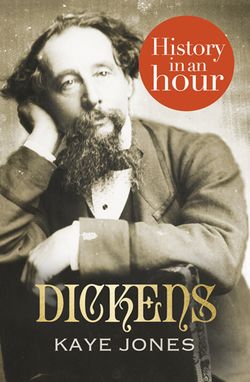Читать книгу Dickens: History in an Hour - Kaye Jones, Kaye Jones - Страница 10
ОглавлениеThe Early Novels
As the Evening Chronicle finished publishing its Sketches of London, Dickens began working on twelve new sketches for the Sunday sporting paper, Bell’s Life In London that included a depiction of life in the Seven Dials. Towards the end of 1835, the publisher John Macrone approached Dickens with the idea of collating his many sketches into a single edition. In return he offered Dickens the sum of £100 for the copyright. Dickens met Macrone through the historical novelist, William Harrison Ainsworth, and this acquaintance is testament to his increasing importance on London’s literary scene. Dickens agreed to Macrone’s offer and George Cruikshank, the well-known caricaturist, was invited to illustrate the two-volume work, Sketches By Boz. It was published on 8 February 1836 and was an instant success; the first step on the road to fame and fortune.
Frontispiece of the First Edition of ‘Sketches by Boz’, 1836
A month after the appearance of Sketches by Boz, Dickens was approached by the publishers, Edward Chapman and William Hall, to write the text for a new series of illustrations by Robert Seymour. With a salary of £14 per month, Dickens accepted without hesitation and persuaded Chapman and Hall to focus the project on his writings rather than Seymour’s illustrations.
On 31 March 1836, the first instalment of the Chapman and Hall project, entitled The Pickwick Papers, was published. The initial print run of 1,000 copies showed only modest sales and the situation was made considerably worse by Seymour’s suicide on 20 September. All parties did, however, decide to continue with The Pickwick Papers. Dickens negotiated a salary increase to £21 per month, and an increase in the amount of writing, from 26 printed pages to 32, with fewer illustrations. In the aftermath of Seymour’s death, Chapman and Hall hired Robert William Buss. Buss was soon fired, owing to the ‘inferiority of his work’ and replaced by Hablot Browne.
In the meantime, Dickens married Catherine at St Luke’s Church in Chelsea on 2 April. A week’s honeymoon in Chalk, Kent, followed and the pair then set up home in the three-roomed flat at 15 Furnival’s Inn. The newlyweds were then joined by Catherine’s sister, Mary.
While the second and third instalments of The Pickwick Papers suffered from poor sales, the fourth brought a dramatic change in fortunes as Dickens introduced the new character, Sam Weller. As Pickwick grew in popularity, Dickens set out writing The Strange Gentleman, a burletta (a type of comic opera) that opened at St James’ Theatre on 26 September. A second edition of Sketches of Boz followed in October alongside preparations for the comic operetta, The Village Coquettes. It was also during this month that Dickens resigned from the Morning Chronicle to edit a new monthly magazine, Bentley’s Miscellany.
